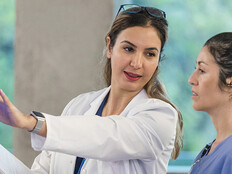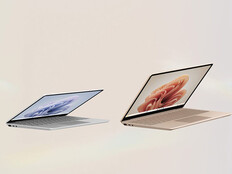What Is Computer Vision in Healthcare?
Computer vision AI is designed to interpret and react to situations much like a doctor, nurse or scientist would. The technology has the potential to improve patient monitoring, allow providers to diagnose diseases much earlier, and help make surgeries more precise.
Computer vision AI also has the potential to reduce errors because unlike humans, computers don’t blink and or get tired. “It’s important to recognize these tools aren’t magic wands or silver bullets,” cautions Dr. Christopher Longhurst, chief clinical and innovation officer at UC San Diego Health and executive director of the Jacobs Center for Health Innovation. “They only deliver outcomes when people use them effectively in workflows to deliver better patient care.”
Key Use Cases of Computer Vision in Healthcare
There are many different ways computer vision AI is being implemented in healthcare.
Medical Images and Diagnostics
Radiology departments have adopted computer vision AI to help providers analyze medical images and detect anomalies sooner, which allows for better patient outcomes.
Longhurst says this technology helped UC San Diego Health identify COVID-19 pneumonia during the pandemic. He gives an example of a heart failure patient who didn’t yet have respiratory symptoms, but a chest x-ray highlighted a potential infection and prompted the medical team to run a COVID-19 test. “The AI helped make the diagnosis much earlier, and the patient was treated and went home without needing critical care.”
He says UC San Diego Health also uses computer vision AI to help prioritize high-risk exams. “The AI can find the patient who potentially had a previously undiagnosed stroke and bring that to the top of the radiologist’s work list,” explains Longhurst.
EXPLORE: Why is Patient Room ‘Next’ the evolution of care?
Surgical Precision and Assistance
AI cameras are assisting surgeons with minimally invasive laparoscopic and robotic procedures. The technology helps identify critical anatomy and tracks the movement of the surgical tools. In addition, Longhurst says machine vision AI is used to verify that all materials, such as sponges, have been removed from the patient’s body before closing the incision.
Computer vision AI is also creating opportunities to expand access to highly specialized care anywhere in the country. Gostine says that cameras can allow specialists to participate remotely in complex surgeries.
“We put the hardware in the operating room and stream the video and audio feeds to a control desk. This reduces friction in communication,” says Gostine. “We then turn on the computer vision algorithms to drive data capture for use cases ranging from OR efficiency and waste reductions to quality improvement and patient safety.”
Real-Time Monitoring
Humans have only one set of eyes and can’t be everywhere at once, but an AI camera can fill in the gaps. Computer vision AI can help improve patient monitoring and reduce preventable issues such as falls — which, according to the Centers for Disease Control and Prevention, annually costs the healthcare system up to $50 billion.
One example of this technology is Artisight’s Patient Room solution. One of its features is that it can send automated alerts when it detects that a patient is trying to get out of bed. A virtual nurse can talk to the patient via a two-way enabled feed, and an alarm can alert nearby staff to the room. As the AI learns, it should better predict patients’ conditions.
“As a physician, I can maximally treat maybe 2,000 patients per year, but you can train an algorithm on hundreds of millions of patient encounters,” Gostine says. “It’s an incredible amount of insight built into a camera that costs less than a dollar per day.”












